Great Design Plant: Hydrophyllum Virginianum
http://decor-ideas.org 12/15/2014 04:13 Decor Ideas
You may want to try Virginia waterleaf (Hydrophyllum virginianum) if you are looking for a reliable, compact and robust shade-tolerant plant for your garden. With silver-spotted foliage and unfurling, showy clusters of pink flowers, Virginia waterleaf will bring interest, form and texture to your woodland or shade garden. It’s an easy-to-grow beauty that will fill that void in the shade, providing much-needed forage for pollinators and beneficial insects.
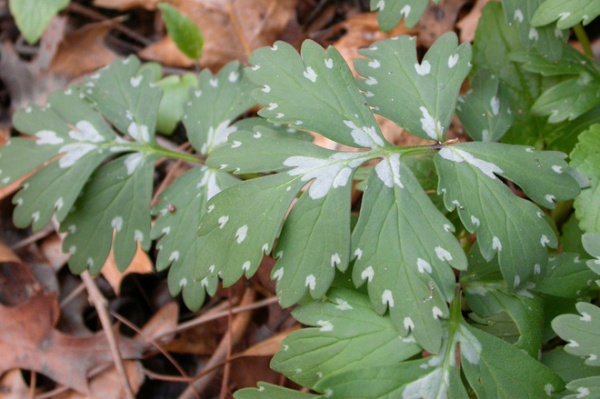
Botanical name: Hydrophyllum virginianum
Common names: Virginia waterleaf, eastern waterleaf, Shawnee salad
Origin: Eastern North America, from Manitoba south to Oklahoma and eastward to North Carolina in the south and New Hampshire and Quebec in the north
Where it will grow: Hardy to -45 degrees Fahrenheit (USDA zones 2b to 7a; find your zone)
Typical plant communities: Woodlands and woodland edges
Soil requirement: Wet-mesic to mesic-dry, sandy-loam to clay-loam soil
Light requirement: Partial sun to shade
Mature size: 6 to 18 inches tall and 12 inches wide
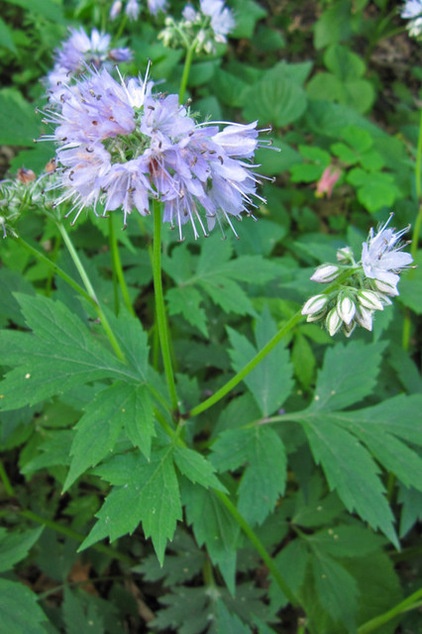
Benefits and tolerances: Tolerates most soil types except extremely dry soils; plants may wilt and turn brown by midsummer if the soil is too dry or the site is in full sun
Seasonal interest: Delicate, finely scalloped foliage with silver to white spots and markings in early spring; pale to dark pink flowers unfurl in mid-April through May; robust clusters of dark green foliage (after flowering) throughout summer
When to plant: Spring or fall; plants are available from most native-plant nurseries in the Midwest and Northeast; can also be grown easily from seed (the seeds require at least 60 days of cold, moist stratification)
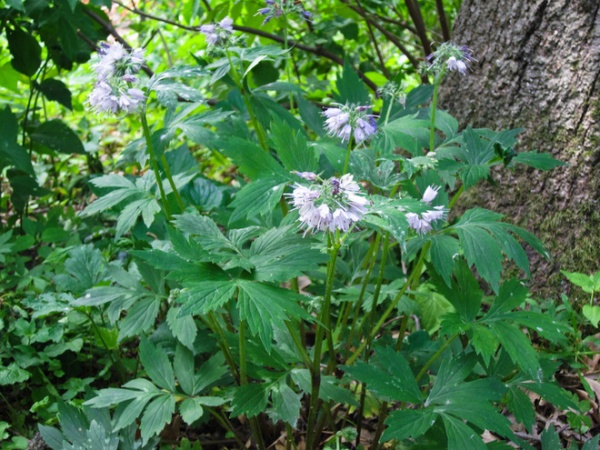
Distinguishing traits. Virginia waterleaf is a very reliable woodland plant with a low, compact, bushy form and showy clusters of flower stalks. Its silver-spotted foliage provides a lot of interest in woodlands in early spring. The foliage turns a dark green (typically losing its spots) after flowering but remains robust throughout the summer.
The flowers have an interesting and uncommon form — a helicoid cyme; the flower clusters unfurl from a coil, and the individual flowers open along the coil in succession.
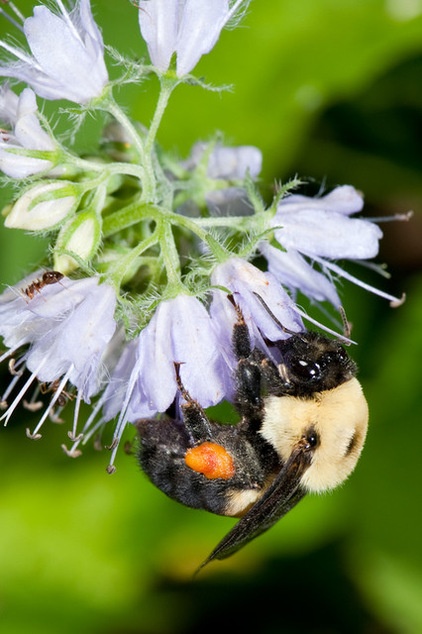
How to use it. Plant Virginia waterleaf in any shady location (except for extremely dry soil). Mass it under trees, along the border or edge of a shade garden, in a woodland restoration or intermixed with a low-growing woodland sedge, such as Pennsylvania sedge (Carex pensylvanica). Combine this native plant with plants of equal height, including Virginia bluebells (Mertensia virginica), Jacob’s ladder (Polemonium reptans), woodland phlox (Phlox divaricata) and bishop’s cap (Mitella diphylla).
Shown: A female bumblebee (Bombus sp) feeding on nectar
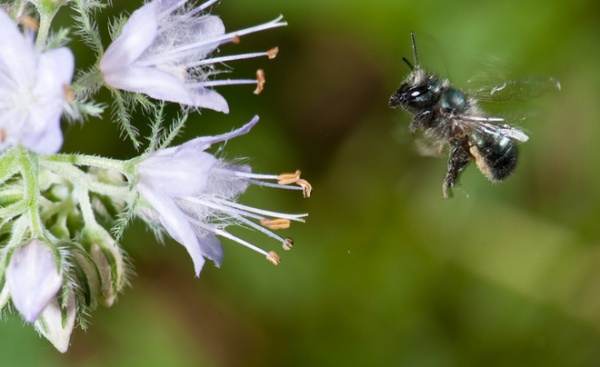
Planting notes. Virginia waterleaf grows well from small plants (2- to 4-inch pots) as well as seed. It can be planted in the spring or early fall. This native perennial grows easily from seed, and if you plant it in a sparsely planted woodland garden, you will find seedlings the following year scattered around the parent plant. This has led to some complaints from gardeners that it is aggressive and does not grow neatly where planted.
If reseeding is a concern, use the plants in a densely planted or mature shade or woodland garden where the seedlings do not have real estate (bare soil) in which to germinate. If you are trying to establish a good population or mass of a plant in a shady area or woodland restoration planting, then reseeding can be a welcome trait.
Shown: A female mason bee (Osmia sp) approaching the flowers
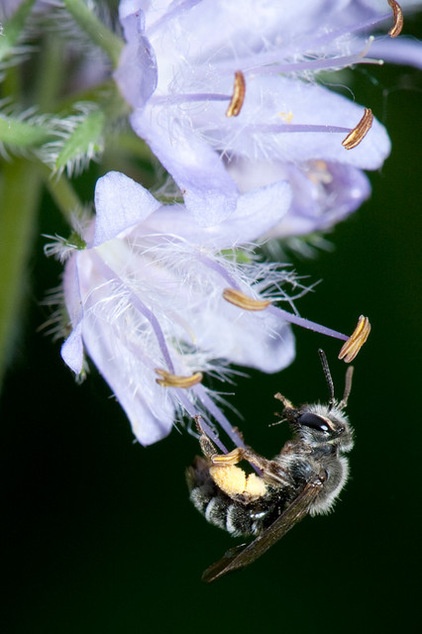
Pollinator notes. The flowers produce a high quantity of nectar, a much-needed food source for pollinators in early spring. Fine hairs cover the filaments and can potentially make accessing the flowers challenging for smaller pollinators, including ants. Perhaps it’s the plant’s adaptation to save resources by limiting nectar pilfering by ants.
Queen bumblebees just emerging from hibernation are common visitors to the flowers. Mason bees, which are active only as adults in early spring, also visit for nectar. Female mason bees’ nest building often coincides with this plant’s flowering, and females can be observed collecting pollen from the flowers to provision their nests.
Small bee species that are common include small sweat bees (Lasioglossum spp) and small carpenter bees (Ceratina spp). Mining bees (several species) also visit for nectar. For mining bees (Andrena geranii), like the one seen here, there is a narrow range of plants, including Virginia waterleaf, that the females will collect pollen from.
Virginia waterleaf lures many types of bees, and the flowers also attract syrphid flies, beneficial insects that prey on aphids (in the larval form).
More:
How to Design a Garden for Native Bees
Browse plants native to other regions of the U.S.
Related Articles Recommended












